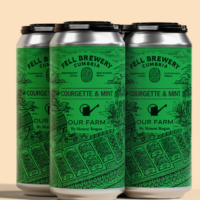A headline grabbing new study published today claims emphatically there is “no ‘safe’ level of alcohol consumption” but the actual risks involved in drinking are not made absolutely clear.
 Published today in The Lancet, the paper, by the Bill Gates Foundation-funded Institute for Health Metrics and Evaluation, in its own words: “generated improved estimates of alcohol use and alcohol-attributable deaths and disability-adjusted life-years (DALYs) for 195 locations from 1990 to 2016, for both sexes and for 5-year age groups between the ages of 15 years and 95 years and older.”
Published today in The Lancet, the paper, by the Bill Gates Foundation-funded Institute for Health Metrics and Evaluation, in its own words: “generated improved estimates of alcohol use and alcohol-attributable deaths and disability-adjusted life-years (DALYs) for 195 locations from 1990 to 2016, for both sexes and for 5-year age groups between the ages of 15 years and 95 years and older.”
Some of the top-billed findings from the study that were pushed to the fore in the press release and have been widely quoted in the media, were that out of 100,000 non-drinkers, 914 were likely to develop a serious health problem such as cancer or suffer an injury.
An additional four people would be affected in either way if people drank just one alcoholic drink a day – an increase of 0.5% – and 63 more people (so 977 in 100,000) would be at risk of injury or disease if they drank two drinks a day, a 7% increase.
For those drinking five drinks a day that number went up by 37% to an additional 338 people.
The report linked alcohol to the deaths of 2.8 million people worldwide in 2016, 2.2% of all deaths in women and 6.8% in men, making it the seventh leading risk factor for mortality and disease.
The report did acknowledge that there was a body of evidence to show that moderate drinking did offer protection against certain diseases, especially cardiovascular ones, but ultimately concluded that the risks of cancers and other illnesses outweighed these benefits.
Its conclusion based on these results was: “Alcohol use is a leading risk factor for global disease burden and causes substantial health loss. We found that the risk of all-cause mortality, and of cancers specifically, rises with increasing levels of consumption, and the level of consumption that minimises health loss is zero. These results suggest that alcohol control policies might need to be revised worldwide, refocusing on efforts to lower overall population-level consumption.”
Ultimately, there is no “safe” level of alcohol consumption was the upshot.
One of the reports authors, Professor Sonia Saxena at Imperial College London, said: “One drink a day does represent a small increased risk, but adjust that to the UK population and it represents a far bigger number, and most people are not drinking just one drink a day.
“Most of us in the UK drink well in excess of safe limits, and as this study shows there is no safe limit. The recommendations need to come down further and the government needs to rethink its policy. If you are going to drink, educate yourself about the risks, and take an informed risk.”
In fact professor Saxena is apparently incorrect in this statement about drinking to excess as yesterday’s paper from the Institute of Alcohol Studies and Sheffield Alcohol Research Group – despite its own failings – showed only 25% of the UK adult population drinks over the government guidelines….
Part of the report’s problem is that it takes health reports from all over the world and then compares them against one another.
Some of the states put forward very prominently in the Guardian for example proclaim that 97.1% of men in Denmark drink alcohol compared with only 0.8% in Pakistan, while 95.3% of Danish women drink and only 0.3% of Bangladeshi women.
The fact that both Bangladesh and Pakistan are strictly Muslim countries where alcohol is illegal appears not to register. Nor the fact that, despite their toping, access to clean water, better diets and superior medical care among other factors means Danes have much higher life expectancies than their counterparts in (largely) alcohol-free Bangladesh and Pakistan.
Furthermore, what the study and its attendant press release have not made entirely clear is just what the base or absolute risk was in the first place.
Professor Sir David Spiegelhalter, chairman of the Winton Centre for Risk and Evidence Communication at the University of Cambridge, made it clear however in his own appraisal of the paper.

He writes that to understand the 0.5% increase in risk from drinking one drink a day, 25,000 people would need to drink 10g of alcohol a day (10g being the amount recognised as a single drink in the report) for a year, that’s 3,650g of alcohol each.
A standard 70cl bottle of gin contains 224g of alcohol so 16 bottles of gin would contain the requisite 3,650g.
So 25,000 people drinking 16 bottles of gin a year each (that’s 400,000 bottles of gin) would be associated with just one additional health problem to the base rate.
Looking at the rise when two drinks a day were consumed (which is just over the 14 units a week UK guidelines), he calculated that 1,600 people would have to drink 20g of alcohol a day so 32 bottles of gin each over the course of a year or 50,000 bottles in total, to once again realise one extra health problem.
As the base rate of risk was less than 1%, even drinking five drinks a day the risk only rose to 1.4%, that’s not to encourage that level of drinking but it is important to qualify the risks suggested by the paper.
Although it claims in absolute terms that there is no safe level of drinking connected with alcohol, what it fails to acknowledge is that, actually, the risks of moderate drinking are in fact very low.
As Spiegelhalter continues, such small risk “needs to be traded off against enjoyment” and indeed small health benefits and complete abstention is not a sensible or practical solution.
Driving, especially driving for pleasure or sport, carries a measure of risk but no one would advocate for banning all driving as a result.
“Come to think of it,” he notes, “there is no safe level of living, but nobody would recommend abstention.”
The full study in The Lancet can be read here.
David Spiegelhalter’s analysis can be read here




